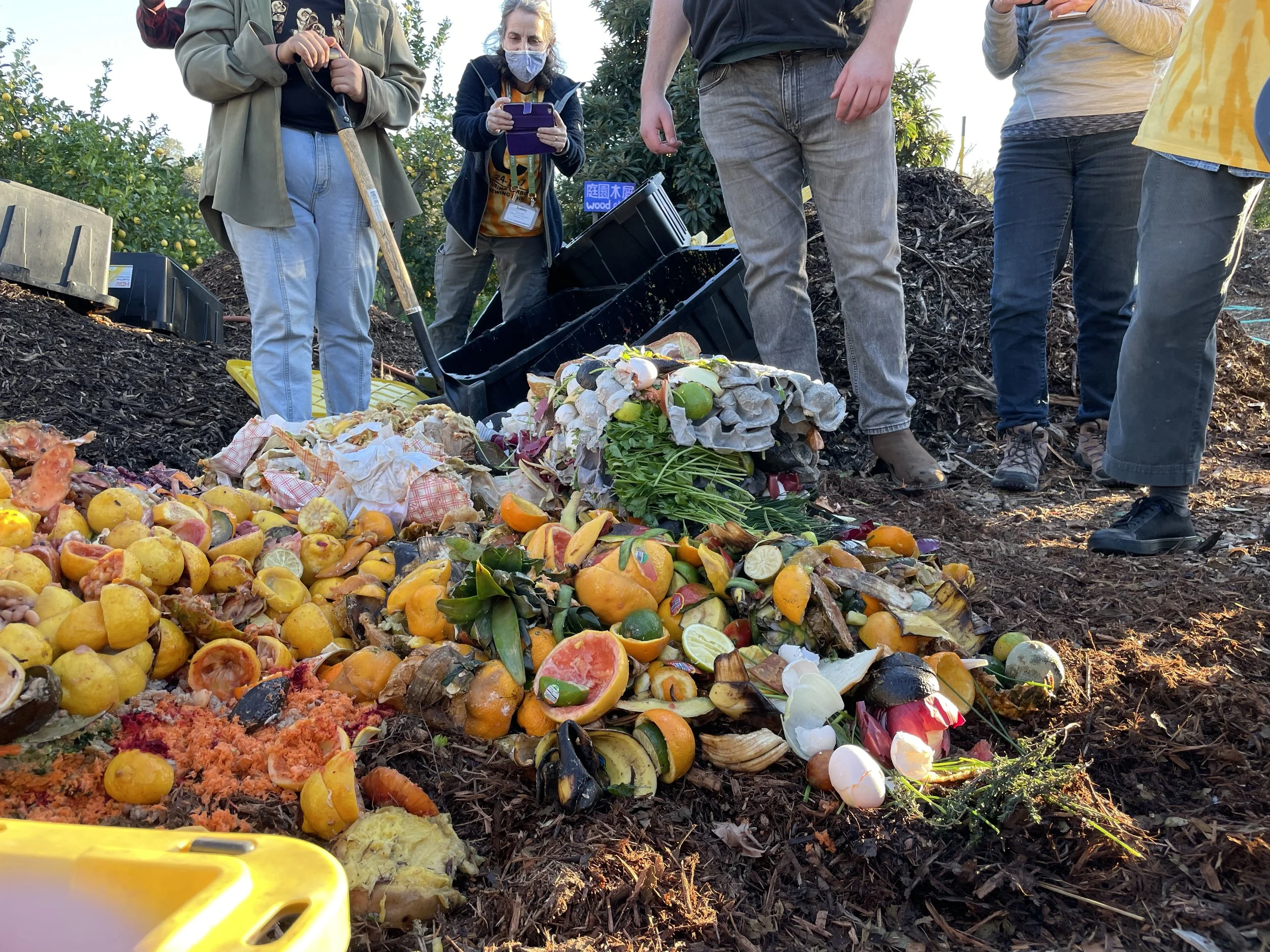Feed the Worms, Not the Landfill
Compost pile demo at Tzu Chi in Southern California. This is one of the community sites of LA Compost, a non-profit that manages a network of composting at the community level. We visited 5 different sites on a tour one afternoon. I was inspired by the use of simple techniques to compost a high amount of food scrap in small areas.
Hello everyone!
It’s been a while since I have written a blog post. But between long hours of entertaining two one year olds, you can still find me on the farm working on our walk-in cooler project, doing chores and leading volunteer project and group tours.
Last week I returned from a heavenly trip to Ontario, California for the Community Compost Collective Forum 2023 (and US Compost Council Conference). If you can imagine a convention center ballroom full of people who’s day-to-day consists of collecting food scraps, many times on bicycle powered routes, and layering it in with shovels full of wood chips into piles as tall as you and me, that set the stage for the week to come.
First of all, thanks to our farmily and the Insitute for Local Self Reliance for the donations and scholarship.
From time immemorial, people have “composted” although they may have had many different names for it. This is nothing new. However, in our fast paced culture of today, and in the US in particular, everything goes into the big curbside tote and gets hauled away to an unknown location where we never have to worry about it again. Or do we? According to the UN food scraps represent a whopping 7% global greenhouse gas emissions due to anaerobic decomposition resulting in methane gas. The good news is, by reducing landfilling edible food by donating it and composting food scraps like banana peels and fibrous stems, we can complete the loop that nature intended. The process of combining carbon material like wood chips with the food scrap and oxygen returns highly fertile soil that can be used to supplement any garden or landscape increasing yields, beautifying our communities, and helping to curb the climate crisis.
It was validating to know that I was amongst people who also like to talk about nerdy compost speak. These include fungi mycelium and what gets communities excited about composting, C:N (carbon:nitrogen) ratios and flow through worm farms, and policy and grant opportunities for composting at the local level.
At the field day at Cal Poly’s Lyle Center for Regenerative Agriculture, we learned about the various ways to build, sift and test compost piles. There are as many compost pile shapes and sizes, tools and techniques as there are hairs on your head! We looked at our compost under the microscope, literally, to learn about testing for biological activity. I was able to network and gain knowledge from other community size composers just like us. And it was really great to learn from experienced compost generators.
So… we are diving in. To begin, Eat South will collect food scraps from community members who live close by or already attend volunteer opportunities at the farm. Our goal is to model a non-smelly, low labor, low tech, small size composting system that yields beautiful healthy finished compost and is replicable in any community. As we tinker and perfect our system, we will train interested community partners to do the same in their own neighborhoods.
I will be giving a short conference talk-back on community composting and answering questions at Seedy Saturday, February 11, 10:30 - 11:00 AM.
The next scheduled composting event is October 22nd. In the meantime, attend a volunteer day to help us on this composting journey. Remember to feed the worms, not the landfill.
